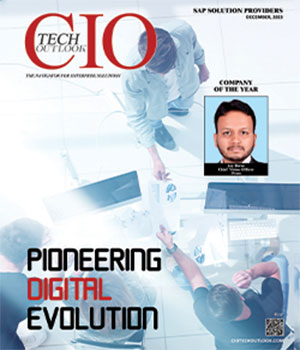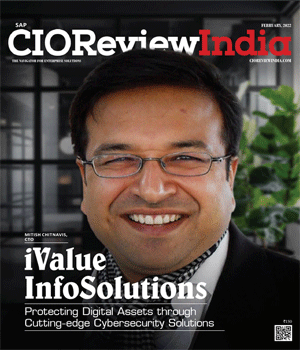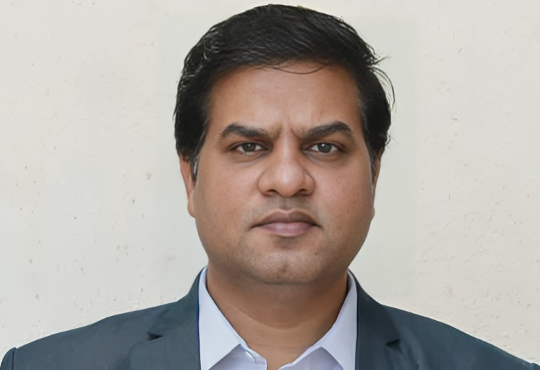
The Challenge: Leveraging Existing Technologies
Alvina Antar, CIO, Zuora | Tuesday, 11 April 2017, 05:24 IST
 The New Quote-to-Cash Architecture
The New Quote-to-Cash Architecture
A key learning that I’ve gathered over the years is to use products for what they are primarily built for and not extend their capabilities to areas outside of the product’s core competency. For instance, when you want mountaineering shoes, you won’t settle for sneakers. They might still offer some protection for your feet but definitely not the kind you need high up on a mountaintop!
Similarly with technology, just because you have invested heavily in a stable end-to-end architecture, doesn’t mean you have an ecosystem that supports all your business’ strategic needs. As your company pivots and transforms, so should you. You need to know when to let go of your comfortable surroundings and realize the capability gaps that prevent you from supporting your business’ growth. When your current quote to cash architecture isn’t able to support your go-to-market strategy, it’s time to supplement your investments.
When a new business model emerges in which traditional pay-per-product (or service) moves towards subscription-based recurring revenue models, it’s time for change. This shift isn’t designed or supported by your ERP systems.
You will need to determine how to adapt your systems to monetize ongoing customer relationships rather than simply selling one-time products. With most ERP systems, the transaction ends with the sale. There’s no relationship beyond the sale. Legacy ERP systems don't really understand how subscriptions work and the long-term relationship between customers and subscribers inherent to the model. They aren’t able to manage complex use-cases like cross-sells, up-sells, timed promotions and constant price adjustments. The hard reality is that you're unable to support these new paradigms and need to design for a new quote-to-cash architecture for the Subscription Economy.
You may receive pushback from your tenured architects and engineers who have built a career off of deep expertise in legacy ERP systems and business processes - none of which are documented. These are the people who are averse to change and unwilling to challenge the status quo. It’s called job protection and the only job at risk is yours!
The challenge for most CIOs is to leverage existing technologies but not be limited by them. It’s really about understanding the boundaries of what a product is and isn’t. Flexibility is critical to survival. I've seen people spending years and millions of dollars trying to implement a solution using the wrong technology only to come to this realization. As a technology leader, you have to stay current to evolving technology trends, have confidence to take calculated risks and make that bet.
It's also about knowing your business enough to anticipate needs. Don’t allow your three to five year strategic roadmap weigh you down and force your business to go around IT and develop CSS’s (Customer Supported Systems) to meet their time to market needs. You must be nimble and provide the agility your business requires to stay competitive in the marketplace. Your business will not wait for IT to catch up or better yet, wake up.
Power of investing in your own technology
As technology becomes more entrenched in every aspect of our lives, the role of the CIO continues to expand, especially at technology companies. Forward looking companies have realized that IT must play a key role in strategic acceleration and constant reinvention.
CIOs have a dual mandate to balance business enablement with the traditional role of IT operational excellence – table stakes for any IT leader. Too little change will generate missed opportunities. Too much change too fast could wreck a company’s momentum, brand and bottom line.
Last year, I committed to advancing the use of our own technology, “Zuora on Zuora”. This ongoing project is designed to make Zuora’s CIO office the company’s best reference account. While most software companies use their own technology, most don’t use it as a core, mission-critical system, and those that do typically use an older, stable release version. The goals of “Zuora on Zuora” are to use, test, assess, and measure our technology, including new features and capabilities, with the unbiased eye of a customer; provide product feedback to our product, engineering, sales and services teams; and serve as a trusted, CIO-to-CIO reference.
This has created significant business value by internalizing our customer’s experience. Seeing how the product is used in real-time has benefitted the entire company. We have a direct, unfiltered view of usage
patterns, requirements, performance, etc. We understand implementation and user hurdles from the inside. We are now our own testbed and relied upon for alpha release testing. What better place to learn from than ourselves?
As CIO, you are one of the largest buyers of technology. What is the first question you ask a company when assessing their technology? How do you use your product internally? This is a question any technology company’s CIO should have a clear answer to. But, they often dread having to answer this because they don’t effectively use their own product. If you’re lucky, the awkward moments pass quickly. If not, you’ve lost respect and credibility. You should not dance around the question but be positioned to share your own implementation with pride - the power of transparency. Sharing best practices, design principles and implementation strategy with prospects and customers builds immediate credibility. This doesn’t happen as a side project with no executive sponsorship. It requires a long-term investment to stay current with your ever-evolving product.
Today, Zuora is a real, billable account on Zuora. Our employees use it every single day. Our Executive staff pulls reports to understand the health of our business. We have direct input on our product roadmap and priorities. And my IT team is proud to share our own implementation with prospects, customers and partners, thereby winning their trust.
Establish this standard of excellence and never settle for mediocrity as simply a service provider. Empower your business through technical innovation and execution. Build expertise in your product and have a profound impact on your business transformation.
I’m betting on the power of investing in our own technology. Are you?
CIO Viewpoint
The Challenge: Leveraging Existing Technologies
By Alvina Antar, CIO, Zuora
Business and Data Analytics to Achieve...
By Todd Simpson, CIO, FDA
Real World Experiences and Lessons Learned With...
By David Whittle, CIO, Bokanyi Consulting
CXO Insights
Prasa: A Pioneer in Offering Precise Solutions...
By Jay Burse, Chief Vision Officer
SAP, the Digital Future Navigating Business...



.jpg)
.jpg)






